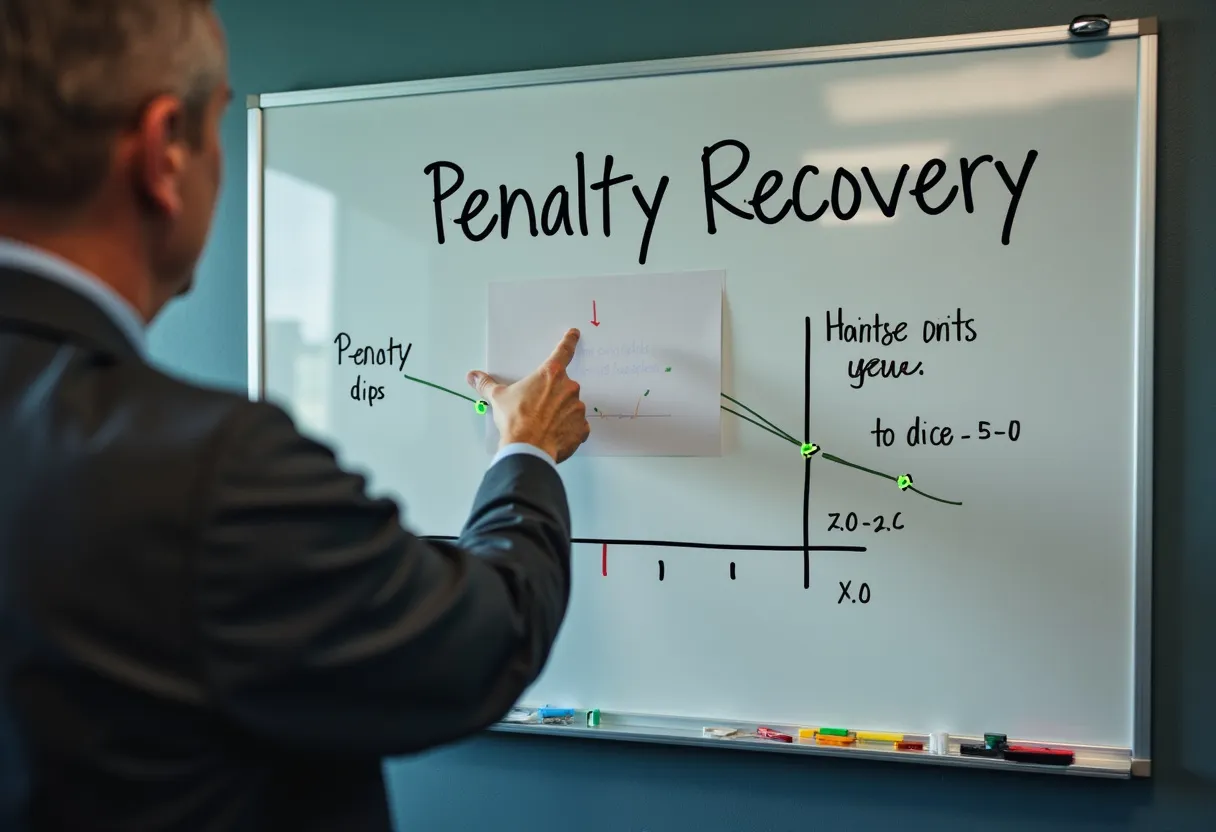Definition
What is Penalty Recovery?
Penalty recovery in the context of SEO refers to the process of identifying, addressing, and resolving issues that have led to a website being penalized by Google. These penalties can result from violations of Google’s Webmaster Guidelines, either through manual actions by Google employees or algorithmic updates. A penalty can significantly impact a website’s visibility, rankings, and organic traffic.
How It Works
Types of Google Penalties
Manual Penalties
These are imposed by human reviewers at Google when a website is found to violate Google’s Webmaster Guidelines. Manual penalties can result in a website being demoted or delisted from search results.
Algorithmic Penalties
These occur due to changes in Google’s algorithms, such as updates like Google Panda or Google Penguin, which target specific issues like low-quality content or dodgy links.
Identifying a Penalty
A sudden drop in organic search traffic or rankings can indicate a penalty. Use tools like Google Analytics, Website Penalty Indicator, or Ubersuggest to identify the issue.
Recovery Process
Identify the Issue
Determine the specific reason for the penalty, whether it is related to content, links, or other SEO factors.
Fix the Problem
Address the identified issues. This may involve removing bad backlinks, cleaning up duplicate content, or improving on-page SEO factors.
Submit a Reconsideration Request
For manual penalties, submit a request to Google explaining the actions taken to fix the issue and promising to comply with guidelines in the future.
Why It Matters
Impact on Website Performance
A Google penalty can drastically reduce a website’s visibility, leading to a significant drop in organic traffic and subsequently affecting sales and revenue.
User Experience
Penalties can make a website invisible to its target audience, negatively impacting user experience and the website’s overall credibility.
Rankings and SEO Strategy
Recovering from a penalty is crucial to restore and maintain good rankings. Continuous violations can lead to long-term damage to a website’s SEO strategy and online presence.
Best Practices
Identifying and Fixing Issues
Conduct a thorough SEO audit to identify and fix any SEO errors, such as bad backlinks, duplicate content, or other violations of Google’s guidelines. Use tools like Majestic SEO, Neil Patel’s backlinks tool, or Google Disavow Tool to clean up backlinks.
Creating a Custom Recovery Plan
Develop a bespoke recovery plan tailored to the specific issues causing the penalty. This plan should include both on-page and off-page SEO strategies.
Submitting Reconsideration Requests
For manual penalties, submit a well-crafted reconsideration request to Google, detailing the actions taken to fix the issue and ensuring compliance with Google’s guidelines.
Monitoring and Maintenance
Regularly monitor website analytics and SEO metrics to detect any potential issues early. Stay updated with Google’s algorithm changes and best practices to avoid future penalties.
Seeking Professional Help
If the process seems complex or time-consuming, consider hiring a professional SEO service specializing in Google penalty recovery to ensure the issue is addressed correctly and efficiently.
Related terms: Penalty Recovery, Google Penalty, Manual Action, Manual Penalty, Exact Match Anchor Text Recovery, Disavow File Maintenance, Reconsideration Request, Over-Optimization Penalty, Negative SEO, Negative SEO Defense
Conclusion
By following these steps and best practices, websites can effectively recover from Google penalties, restore their online visibility, and maintain a strong SEO strategy. Regular monitoring and adhering to Google’s guidelines are crucial in preventing future penalties and ensuring sustained online success.



